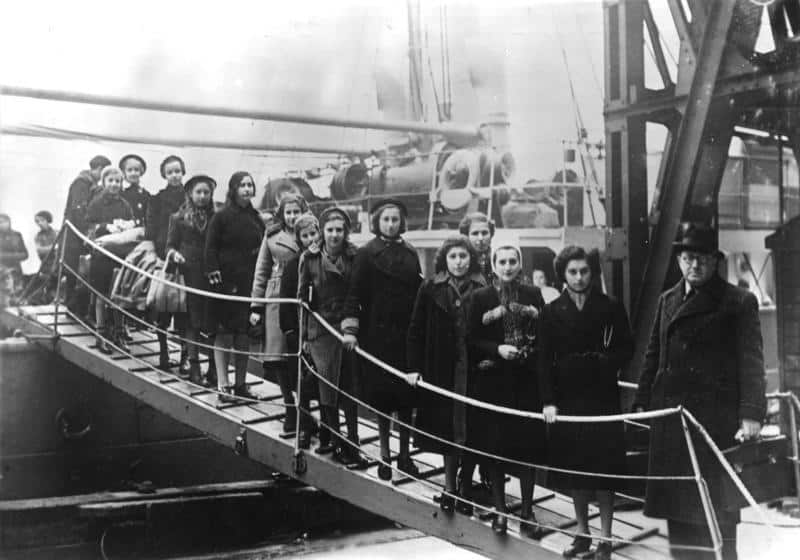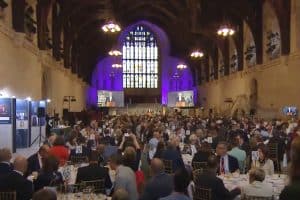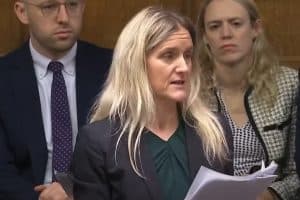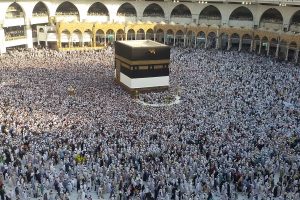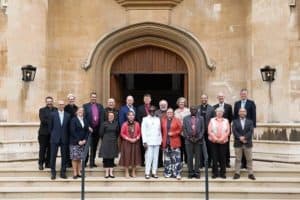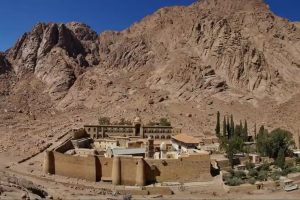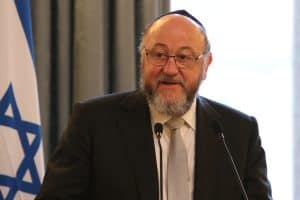By Catherine Pepinster
Eighty-five years ago, on 2 December, 1938, one of the most remarkable rescue efforts was launched to combat the Nazis’ desire to annihilate the Jewish people.
The Kindertransport saved about 10,000 Jewish children who were brought to Britain to start new lives.
It took the efforts of British officials in Germany, refugee committees, and many volunteers willing to organise the rescue and become foster families to make the Kindertransport a success.
The importance of the Kindertransport project is highlighted by the numbers of Jewish children who did not survive the Third Reich: up to 1.2 million Jewish children perished during the Holocaust. Only 11 per cent of those living in Europe at the start of the Second World War survived it.
The Kindertransport also became a means to another end: helping to ensure a new homeland for Jews — the state of Israel — to flourish. That included encouraging children to move on from Britain to join some of the kibbutzim being founded after the war.
While most children who came to Britain through the Kindertransport were taken in by individual families, others were sent to training farms where they learnt agricultural skills that would stand them in good stead in the new kibbutz.
Kibbutz had first been founded as part of a late 19th-century movement of Russian Jews, wanting to move away from persecution to start a new life in Palestine. It attracted people drawn to farming but who could not afford to set up on their own, or did not have the skills.
Living collectively was a practical solution but it also reflected Zionist and socialist ideals that many people had at the start of the 20th century. As antisemitism grew in Europe in the 1920s and 1930s, so more Jews considered leaving for Palestine, then ruled by Britain under a League of Nations mandate.
By the start of the Second World War, 24,000 people were living in kibbutzim — about 5 per cent of the Jewish population of Palestine. Today about 120,000 (under 2 per cent of Israel’s population) people live on kibbutz in Israel — their existence highlighted by the deadly October 7 attacks on several of them by Hamas.
The links between kibbutzim and Kindertransport is not well known. According to Get The Children Out!, Mike Levy’s book on the Kindertransport, key figures who helped the kibbutzim grow included British officials working in Germany and several Zionists based in Britain keen to help the cause.
Among them was Captain Frank Foley, a former British soldier, spy and passport official based in Berlin, who managed to get round the restrictions imposed by the Nazis and help thousands of Jews escape to Britain and Palestine.
By November 1938, crowds of Jewish people thronged Foley’s passport office, desperate to be allowed to enter Britain. But they needed both British visas and exit forms provided by the Nazi authorities. Aware that time was running out for Jewish people in Germany, Foley took it upon himself to stamp their passports without waiting for full approval from London.
Foley’s wife, Kay, described the scene: “Jews trying to find a way out of Germany queued in their hundreds outside the British Consulate, clinging to the hope that they would get a passport or a visa. Day after day we saw them standing along the corridors, down the steps and across the large courtyard, waiting their turn to fill in the forms that might lead to freedom.
“In the end, that queue grew to be a mile long. Some were hysterical. Many wept. All were desperate. With them came a flood of cables and letters from other parts of the country, all pleading for visas and begging for help. For them, Frank’s ‘yes’ or ‘no’ really meant the difference between a new life and the concentration camps. But there were many difficulties. How could so many people be interviewed before their turn came for that dreaded knock on the door?”
Foley’s focus was also Palestine which the British had become increasingly concerned about. In 1939 a government white paper suggested that only 75,000 Jews should be sent there over a five-year period.
But according to Levy, Foley — who had been urging the British government since 1936 to help more Jews — “signed blank visa certificates and issued thousands of special papers allowing young Jews to enter Palestine under the aegis of Youth Aliyah and other Zionist organisations still based in the Reich”.
In August 1939, Foley and his passport team were recalled to Britain. His last act was to leave behind 80 signed certificates for young Jews, who then left for Scandinavia before travelling on to Palestine.
By the time Foley was recalled, the Kindertransport was well under way. So were the efforts of two men who were also concerned to help Jewish people flee Europe to Palestine. The first, Josiah Wedgwood, of the pottery family, was an MP, noted campaigner for the rights of refugees and a strong advocate for a national home for Jews in Palestine, which he envisaged as part of the British Empire.
As well as helping to set up the German Refugee Hospitality Committee, he took up individual cases with Home Office ministers and personally provided financial guarantees for more than 100 Jewish refugees who were waiting their turn for the quotas imposed by the United States, or the British Mandate in Palestine.
Wedgwood’s conviction of the importance of a permanent home for the Jewish people in Palestine was shared by Brigadier-General Sir Wyndham Deedes, whose travels in the Middle East had convinced him to be a Zionist.
Deedes’s commitment to the Jewish cause was also shaped by his brand of Christianity, which convinced him that there needed to be a new state for the dispersed peoples of the Old Testament, according to Levy. In the early 1920s he had become chief secretary to Sir Herbert Samuel, high commissioner for the British Mandate, and was committed to the Balfour Declaration of 1917, which called for the establishment of a “national home for the Jewish people”.
By 1936 Deedes was back in London, concerned about the plight of Jews in Germany and, says Levy; “Glimpse into any of the child rescue archives from this period and Wyndham Deedes’s name will appear.”
By 1936 Deedes had helped set up the Inter-Aid Committee for Children from Germany and Austria, and in 1938 became joint president, with Samuel, of the newly founded Movement for the Care of Children from Germany. His belief in the Zionist cause came from his devout Christianity, and, says Levy, “he was without doubt a central figure in the creation of the Kindertransport, but has largely become forgotten”.
Others as keen to support the move of refugees to Britain and then on to Palestine included Viscount Traprain, the nephew of Arthur Balfour who had written the 1917 declaration. Traprain offered his estate near Edinburgh as host for a farm school — an offer taken up by a synagogue in the Scottish capital — and the estate became an agricultural training centre for 160 Jewish children, where the young people were encouraged to run it as a collective, akin to a kibbutz. Similar schemes were set up in Wales and in Thaxted, Essex, where Bachad, a religious Zionist organisation, trained young refugees so effectively in farming that they won county prizes for their dairy cattle.
The Bachad organisation also set up a training farm in Northern Ireland. The farm, at Millisle, County Down, comprised 70 acres of arable land with support coming from both Dublin and Belfast’s Jewish communities. The Belfast Refugee Aid Committee was keen to train young Jewish refugees who wanted to become “chalutzim” — pioneers of modern agricultural methods on the kibbutz settlements.
The first arrivals had to transform a derelict site into a fully operational farm with accommodation for 80 refugees.
Edith Jacobowitz, who arrived aged 14 with her brother Gert, after their parents were arrested in Berlin, told the Imperial War Museum about her memories of Millisle Farm: “Our dining room was an old stable, where the rain trickled in gently. The sleeping accommodation consisted of two large tents, into which camp-beds were put side by side. The following night we moved into a cowshed which had been whitewashed. The days were rather pleasant, that July before the war. If we had not been waiting for news of our loved ones, it could have been fun.”
The children attended schools locally and worked at the farm, which became self-sustaining, growing vegetables and cereal. Teenagers also reared cows and chickens and learnt new skills in a farm machinery repair shop, a dairy, carpenters’ and cobblers’ workshops, a laundry and kitchens.
Looming over the children, though, was the fate of the families left behind in Germany. Edith’s parents died in concentration camps, her father in Dachau, her mother in Auschwitz.
One former Millisle farm trainee refugee said: “Gradually, one by one, all the children of the farm became orphans.”
It was this experience, as much as the original Zionist dream of a home for Jews in Palestine, that inspired young refugees to leave Britain after the war and make a new life on the kibbutz of a young Israel.
There was also a practical reason why teenage refugees, especially boys, would go to farm schools. “Often people did not want to foster 17-year-old boys,” Levy explains, “so the farms were a useful alternative. But nonetheless, many of those who set up the farm schools had a romantic dream about how these young people could later help with the kibbutz settlements.”
Levy estimates about three of Israel’s kibbutzim owe their existence to the young people who came to Britain and trained in farming here. Among them is Lavi, in northern Israel. When it was building its first synagogue, soon after the end of the Second World War, it could not afford to buy furniture, so its carpenters made it.
It was the start of a flourishing industry, and now Lavi Furniture Industries has supplied furniture to 6,000 synagogues across the world — a global legacy of the British venture that saved so many thousands of Jewish children.

